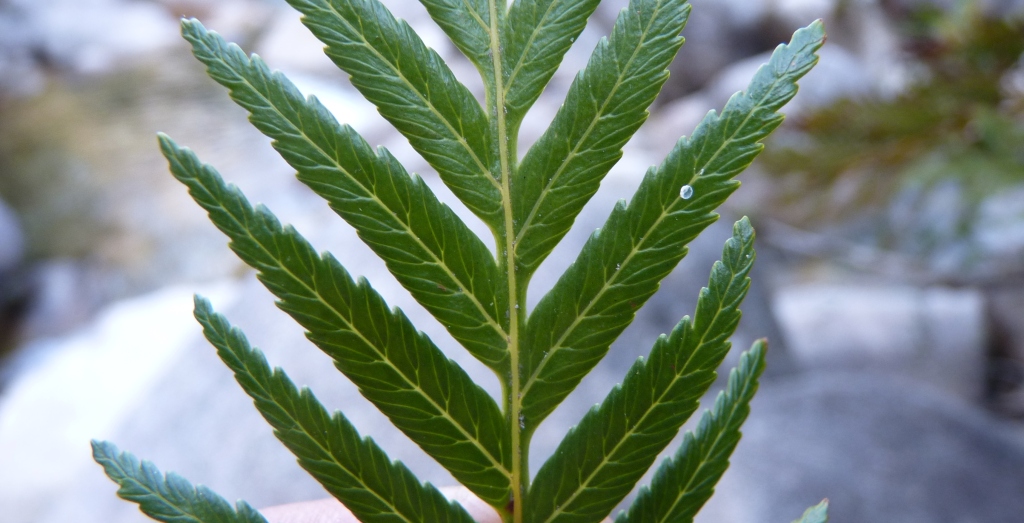Todea barbara
(L.) T.Moore Austral King-fernTrunk barrel-shaped, up to 1.8 m tall and 1.2 m diam., thickly coated with dark brown to black, fibrous aerial roots. Fronds up to 2.5 m long and 0.7 m wide, almost glabrous, without scales, forming one to several crowns with stipes submerged at base in root mass. Stipe 15–60 cm long, shorter than lamina, c. 1 cm diam., olive-green to light brown, smooth, flattened or grooved, winged at base with 2 broad flanges. Lamina 25–65 cm long, 12–35 cm wide, ovate, elliptic or oblong-lanceolate, bipinnate, green, glossy, somewhat leathery. Pinnules 1.5–4 cm long, narrowly oblong, sessile; attached by vein only at base of pinnae, but by full width toward apex; margins bluntly serrate. Sporangia numerous on lower parts of frond, large, spherical, red-brown when ripe, splitting vertically; spores numerous, green.
Wim, GleP, VVP, GipP, OtP, WaP, Gold, CVU, GGr, DunT, NIS, EGL, EGU, WPro, HSF, HNF, OtR, Strz, HFE, VAlp. Also SA, Qld, NSW, Tas. (including Flinders Is. and King Is.). New Zealand, South Africa. On waterlogged, organic soil in shaded gullies, watercourses and swamps; on and south of the Great Dividing Range.
A distinctive fern, with its large, fibrous trunk bearing crowns of bipinnate fronds, the lower portions of fertile lamina completely covered in rusty-coloured sporangia. Todea barbara is slow-growing and long-lived (200 year old specimens can be found in undisturbed forest).
Entwisle, T.J. (1994). Ferns and allied plants (Psilophyta, Lycopodiophyta, Polypodiophyta). In: Walsh, N.G.; Entwisle, T.J., Flora of Victoria Vol. 2, Ferns and Allied Plants, Conifers and Monocotyledons, pp. 13–111. Inkata Press, Melbourne.
 Spinning
Spinning



